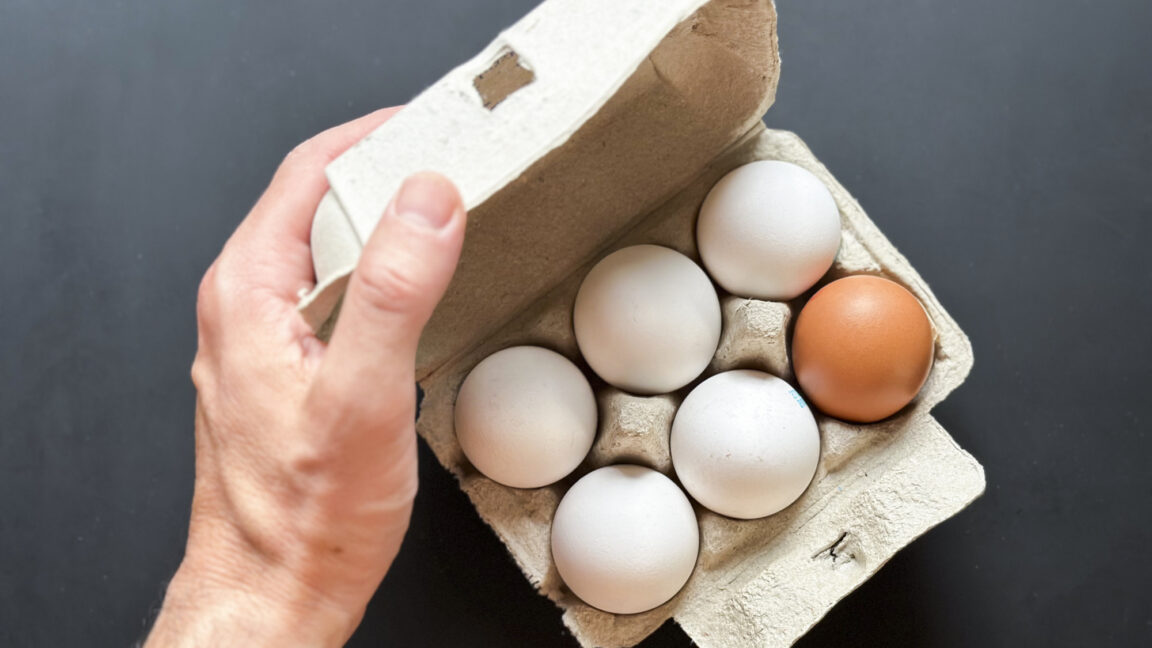An egg is an amazing thing, culinarily speaking: delicious, nutritious, and versatile. Americans eat nearly 100 billion of them every year, almost 300 per person. But eggs, while greener than other animal food sources, have a bigger environmental footprint than almost any plant food—and industrial egg production raises significant animal welfare issues.
So food scientists, and a few companies, are trying hard to come up with ever-better plant-based egg substitutes. “We’re trying to reverse-engineer an egg,” says David Julian McClements, a food scientist at the University of Massachusetts Amherst.
That’s not easy, because real eggs play so many roles in the kitchen. You can use beaten eggs to bind breadcrumbs in a coating, or to hold together meatballs; you can use them to emulsify oil and water into mayonnaise, scramble them into an omelet or whip them to loft a meringue or angel food cake. An all-purpose egg substitute must do all those things acceptably well, while also yielding the familiar texture and—perhaps—flavor of real eggs.
Today’s plant-based eggs still fall short of that one-size-fits-all goal, but researchers in industry and academia are trying to improve them. New ingredients and processes are leading toward egg substitutes that are not just more egg-like, but potentially more nutritious and better tasting than the original.
In practice, making a convincing plant-based egg is largely a matter of mimicking the way the ovalbumin and other proteins in real eggs behave during cooking. When egg proteins are heated beyond a critical point, they unfold and grab onto one another, forming what food scientists call a gel. That causes the white and then the yolk to set up when cooked.
That’s not easy to replicate with some plant proteins, which tend to have more sulfur-containing amino acids than egg proteins do. These sulfur groups bind to each other, so the proteins unfold at higher temperatures. As a result, they must usually be cooked longer and hotter than ones in real eggs.
To make a plant-based egg, food scientists typically start by extracting a mix of proteins from a plant source such as soybean, mung bean, or other crops. “You want to start with what is a sustainable, affordable, and consistent source of plant proteins,” says McClements, who wrote about the design of plant-based foods in the 2024 Annual Review of Food Science and Technology. “So you’re going to narrow your search to that group of proteins that are economically feasible to use.”
Fortunately, some extracts are dominated by one or a few proteins that set at low-enough temperatures to behave pretty much like real egg proteins. Current plant-based eggs rely on these proteins: Just Egg uses the plant albumins and globulin found in mung bean extract, Simply Eggless uses proteins from lupin beans, and McClements and others are experimenting with the photosynthetic enzyme rubisco that is abundant in duckweed and other leafy tissues.
These days, food technologists can produce a wide range of proteins in large quantities by inserting the gene for a selected protein into hosts like bacteria or yeast, then growing the hosts in a tank, a process called precision fermentation. That opens a huge new window for exploration of other plant-based protein sources that may more precisely match the properties of actual eggs.
A few companies are already searching. Shiru, a California-based biotech company, for example, uses a sophisticated artificial intelligence platform to identify proteins with specific properties from its database of more than 450 million natural protein sequences. To find a more egglike plant protein, the company first picked the criteria it needed to match. “For eggs, that is the thermal gel onset—that is, when it goes from liquid to solid when you heat it,” says Jasmin Hume, a protein engineer who is the company’s founder and CEO. “And it must result in the right texture—not too hard, not too gummy, not too soft.” Those properties depend on details such as which amino acids a protein contains, in what order, and precisely how it folds into a 3D structure—a hugely complex process that was the subject of the 2024 Nobel Prize in chemistry.
The company then scoured its database, winnowing it down to a short list that it predicted would fit the bill. Technicians produced those proteins and tested their properties, pinpointing a handful of potential egglike proteins. A few were good enough to start the company working to commercialize their production, though Hume declined to provide further details.


